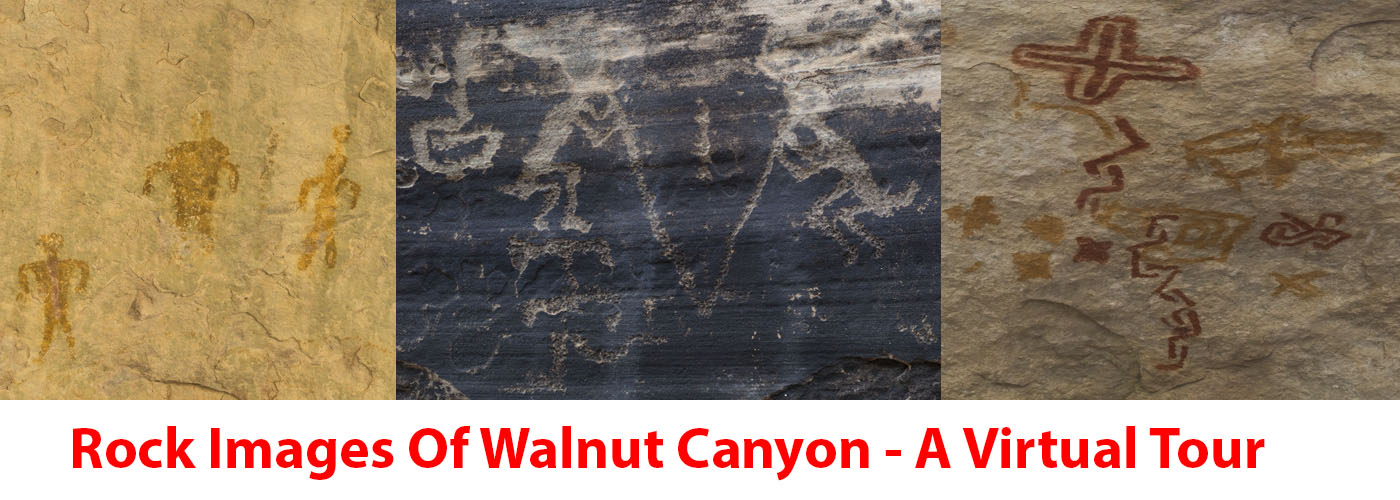While a small petroglyph site, with only a few elements, WACA 209 contains the most iconic petroglyph image at Walnut Canyon – the Twins. The two images face each other with legs and arms bent, each holding a long staff or musical instrument in their hands. The ends of their staffs meet below them and form a ‘V.’ Similar images have been documented throughout the American Southwest and have been called flute players and Kokopelli. In the first panorama below, the flute players can be seen in the niche of the canyon wall, near the center of the starting panorama position. The panel can be seen more prominently in the second panorama.
The site is located at the bottom of Walnut Canyon, not far away from a group of cliff dwellings. The rock at the bottom of the canyon is Coconino Sandstone, laid down as sand dunes about 260 million years ago during the Permian period; even a brief examination of this sandstone will reveal “cross-bedding,” angular erosional features that show how the dunes were deposited at different angles depending on the wind direction at the time. In the dry Southwest, the occasional dampening of the rock faces combined with dust and bacterial action can create a dark layer on the surface of rocks, a mixture of iron and manganese oxides; this layer is commonly referred to as “desert varnish”. If the rock underneath the varnish is lighter in color, pecking or scraping away the varnish will reveal the lighter surface underneath. The Native Peoples took advantage of this by pecking away the dark varnish to create designs from the light-colored sandstone underneath.
For additional views of these petroglyphs, go to the “209 – A Closer Look” or “209- In A Different Light” pages.

